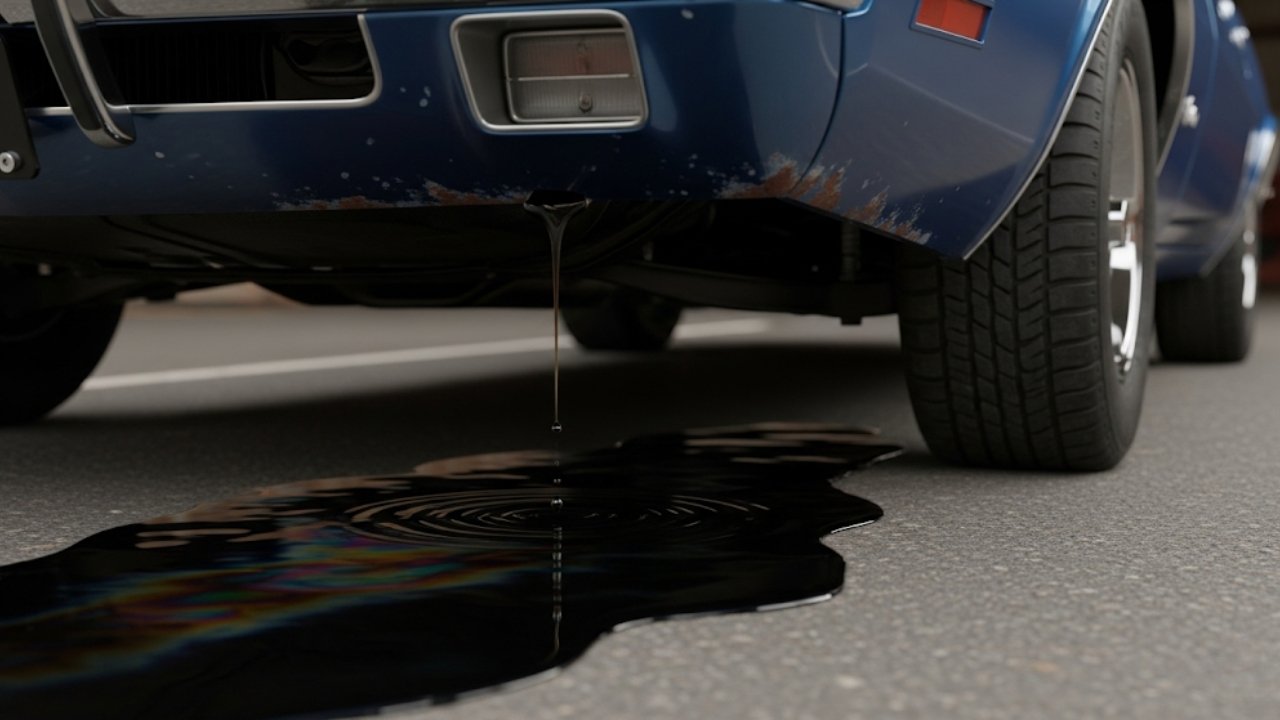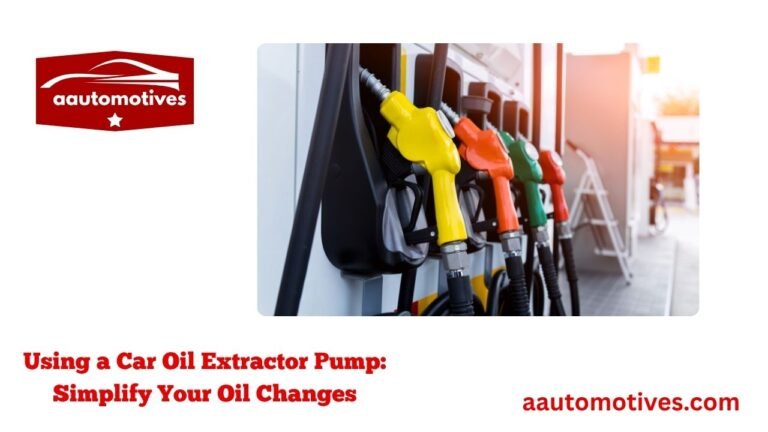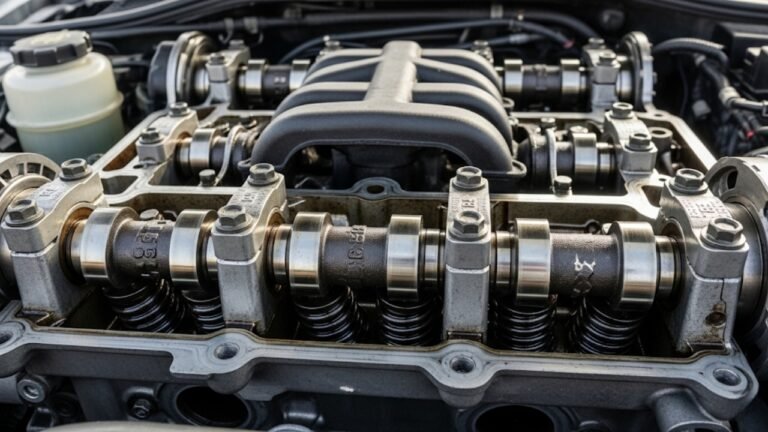Why Is Oil Leaking from Your Car? Top Causes and What to Do

We’ve all been there.
You park your car after a long day, only to return and find an ugly dark stain underneath it. You bend down, touch it, sniff it (yeah, we all do that), and it hits you — engine oil. Suddenly, your car feels more fragile. Like a friend who’s silently suffering.
A car oil leak isn’t just a mess on your driveway. It can be a symptom of deeper issues hiding under the hood. Some are simple. Some are serious. But all deserve your attention. In this article, we’re diving deep into the causes of oil leaks from cars, what each one means, and how you can fix or prevent them — all in plain English.
Whether you’re a new driver or a seasoned car enthusiast, understanding the main keyword – oil leak from car causes — will save you time, money, and maybe even an engine.
1. The Most Common Oil Leak Culprit: The Oil Filter or Plug

But here’s the thing — oil filters and drain plugs are removed and replaced during oil changes. If the mechanic (or you) didn’t tighten them properly, or used the wrong part, leaks can start instantly.
Why This Happens:
-
Loose filter: Overtightened or too loose = leaking seal.
-
Stripped plug threads: Can’t form a tight seal.
-
Cracked oil pan: Especially if plug is jammed in forcefully.
What It Looks Like:
-
Small, growing puddle under the engine.
-
Steady drip right after parking.
-
Oil light may flicker if levels drop too low.
Personal Tip:
Last winter, I did a DIY oil change in a rush. Next morning, my driveway looked like it bled. Turns out I hadn’t tightened the filter all the way. Rookie mistake. Learn from me!
2. Worn or Broken Gaskets and Seals: Silent Failures
Gaskets and seals are like the invisible heroes of your engine. They sit between parts and prevent fluids from escaping. But over time, they crack, harden, or wear down — especially with heat cycles.
Types of Gaskets That Often Fail:
| Gasket Name | Location | Risk if Failed |
|---|---|---|
| Valve cover gasket | Top of engine | Oil leaks onto hot engine = smoke |
| Head gasket | Between engine block & head | Can mix oil & coolant (very serious) |
| Oil pan gasket | Between oil pan and engine | Major leak, puddles while parked |
| Timing cover gasket | Front of engine | Can affect timing belt performance |
Symptoms:
-
Burning oil smell.
-
Smoke from engine bay.
-
Loss of oil pressure (dangerous).
-
Visible oil along engine seams.
Relatable Truth:
A friend once ignored the faint smell of burnt oil for weeks. Thought it was just the heater. Turned out to be a valve cover gasket leak, dripping oil onto the manifold. One spark could’ve set the whole engine on fire.
3. Bad Oil Pan or Impact Damage: Hidden Enemies Beneath
Let’s be real — most of us don’t crawl under our cars regularly. So if you hit a speed bump too fast, or drive on rough terrain often, your oil pan might be damaged without you knowing.
What Can Go Wrong:
-
Cracks or punctures in the oil pan.
-
Bent oil pan edge = bad seal with the gasket.
-
Rocks, debris, or curbs can dent pans easily.
Clues to Look For:
-
Fast oil loss.
-
Puddle under the front-middle of the car.
-
Metallic scraping sounds if pan is sagging.
Intuition Check:
If you drive a low-slung car, keep a mental note of roads with high bumps. One hit at the wrong angle can tear through the oil pan like a can opener.
4. PCV Valve Failure: The Secret Pressure Leak
Here’s a part that rarely makes headlines, but is crucial — the Positive Crankcase Ventilation (PCV) valve. It regulates engine pressure by letting gases escape. If this valve gets clogged, pressure builds up, and oil is forced out through seals and gaskets.
Signs of PCV Valve Problems:
-
Oil leaks without a clear source.
-
Blue smoke from exhaust.
-
Poor engine performance.
-
Oil splatter in engine bay.
Why This Happens:
-
Neglected maintenance.
-
Bad air filter causing extra soot buildup.
-
Old PCV hoses cracking or loosening.
What To Do:
Replacing a PCV valve is cheap. Like, under $20. But if left unchecked, it can lead to hundreds in seal and gasket replacements.
5. Faulty Oil Cooler Lines or Connections
Not all cars have oil coolers, but those that do rely on oil cooler lines to carry oil away from the engine, cool it, and bring it back. If those lines crack or seals break, oil starts dripping down the side of your engine.
Causes:
-
Rubber hoses drying out.
-
Clamp failure.
-
Bad installation (especially aftermarket coolers).
Watch For:
-
Slow leaks that get worse over time.
-
Stains near the radiator or front of the engine.
-
Low oil levels without clear puddles — often leaks while driving.
6. Oil Pressure Sensor Leak: Tiny Part, Big Mess
This one’s sneaky. The oil pressure sensor monitors your oil levels and sends data to your dashboard. But if the sensor or its O-ring fails, it can start leaking oil around its base.
Look for These:
-
Oil pooling near the sensor (usually behind the engine).
-
Sensor covered in oily grime.
-
Dashboard oil light turning on and off.
Pro Tip:
If your car is leaking oil but the mechanics can’t find it easily — ask them to check the oil pressure switch. It hides in plain sight.
7. What Happens If You Ignore an Oil Leak?
This part is crucial — because too many drivers wait until it’s too late.
You see, engine oil is more than just a lubricant. It’s the bloodline of your engine. It reduces heat, protects moving parts, and ensures everything runs smoothly. Ignoring an oil leak from your car is like ignoring chest pain — it could be minor, or it could be fatal.
What Could Go Wrong?
-
Overheating: Oil keeps the engine cool. Without it, temperatures rise fast.
-
Friction and wear: Internal metal parts grind without oil, causing irreversible damage.
-
Engine seizure: In severe cases, your engine may completely lock up and die.
-
Increased emissions: Oil on engine parts burns and pollutes the air.
-
Fire hazards: Leaked oil touching hot surfaces can catch fire.
Emotional Reality Check:
I once saw a woman crying at a service center because her engine had seized. She’d noticed the oil stains for months but kept topping it up without fixing the cause. The repair bill? Over $3,000. Please don’t be that person. Small leaks turn into big problems quickly.
8. How to Diagnose Where Your Oil Leak Is Coming From
Spotting the oil leak from car causes early is half the battle. Here’s how to be your own detective:
Step-by-Step Guide:
-
Check Oil Level:
-
Use the dipstick when the engine is cold.
-
If it’s low or dry, you likely have a leak.
-
-
Look Under the Car:
-
Fresh oil is amber or brownish.
-
Drips near the front = engine; middle = oil pan; rear = transmission (not oil).
-
-
Inspect the Engine Bay:
-
Look around the valve cover, oil cap, and gaskets.
-
Use a flashlight to find shiny, wet spots.
-
-
Use UV Dye:
-
Add oil-safe fluorescent dye.
-
Drive for a few miles, then shine a UV light — the leak glows.
-
-
Sniff Test:
-
Burning smell? Oil might be dripping onto a hot part like the exhaust.
-
Bonus Tip:
Place a clean white cardboard sheet under your parked car overnight. It helps trace the leak pattern and intensity.
9. How Much Does It Cost to Fix an Oil Leak?
Costs vary wildly depending on what’s leaking and the car model. Here’s a general breakdown:
| Component | Repair Cost (Approx.) |
|---|---|
| Oil filter/oil plug | $20 – $50 |
| Valve cover gasket | $100 – $300 |
| Oil pan gasket | $150 – $500 |
| PCV valve | $20 – $80 |
| Oil pressure sensor | $60 – $150 |
| Head gasket (major job) | $1,000 – $2,000+ |
Friendly Advice:
If you’re low on cash, stopgap solutions like leak-stop additives may work temporarily — but they’re not permanent. Always aim for a proper fix before it escalates.
10. Preventing Oil Leaks: Car Love 101
As with any relationship, prevention beats cure. Treat your car well, and it’ll return the favor.
Smart Maintenance Tips:
-
Regular oil changes every 5,000-7,000 miles.
-
Inspect undercarriage after hitting potholes or curbs.
-
Replace old gaskets before they fail (usually around 80k-100k miles).
-
Use manufacturer-recommended oil — cheap oil breaks down faster.
-
Don’t overfill oil — too much pressure can cause leaks too.
Real Talk:
We maintain our skin with moisturizers and our phones with screen protectors. Why not do the same for our cars? A few checks a month can save thousands in the long run.
✅ Oil Leak Causes Recap Table
| Cause | Location | Easy Fix | Danger Level |
|---|---|---|---|
| Loose oil plug/filter | Bottom of engine | Retighten or replace | Low |
| Valve cover gasket | Top of engine | Replace gasket | Medium |
| Oil pan damage | Under engine | Replace pan or gasket | High |
| PCV valve failure | Engine block | Replace valve | Medium |
| Oil pressure sensor | Near engine block | Replace sensor | Medium |
| Oil cooler line leak | Near radiator/front | Replace line | Medium-High |
FAQs
Q1: Is it safe to drive with an oil leak?
It depends. If it’s a small drip and your oil level is stable, short drives are usually okay. But if you’re losing oil fast, stop driving and get it checked.
Q2: Can an oil leak cause a fire?
Yes. If oil drips onto a hot engine part, like the exhaust manifold, it can ignite. Never ignore burning oil smells.
Q3: Can I fix an oil leak myself?
Yes, for minor leaks like a loose plug or PCV valve. But for gaskets or internal engine issues, professional help is best.
Q4: Do oil leak stop additives work?
Sometimes. They soften gaskets and may slow leaks, but they’re temporary and not suitable for major leaks.
Q5: Why does my car leak oil only when parked?
Some seals expand when hot. Once the engine cools, gaps form, causing slow leaks — especially from the oil pan gasket.
Q6: How long can I drive with a small oil leak?
If oil levels are stable, short drives may be okay. But monitor it closely and top up as needed. Long-term? Get it fixed.
Q7: Can oil leaks affect fuel economy?
Yes. An engine running low on oil may become less efficient, run hotter, and work harder — using more fuel in the process.
Final Thoughts: Don’t Ignore Your Car’s Cry for Help
Cars are more than machines — they carry us through life’s moments. Whether it’s the daily commute, a road trip with friends, or a late-night drive to clear your head — your car is part of the story.
So when you see that first drip of oil, don’t dismiss it.
It’s your car whispering, “Something’s not right.”
By understanding the oil leak from car causes, you take the first step in protecting your engine, your safety, and your peace of mind. Maintenance isn’t just a chore — it’s an act of care.
Take the time. Spend the small money now. Avoid the big problems later.






